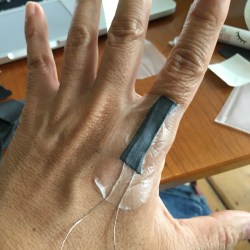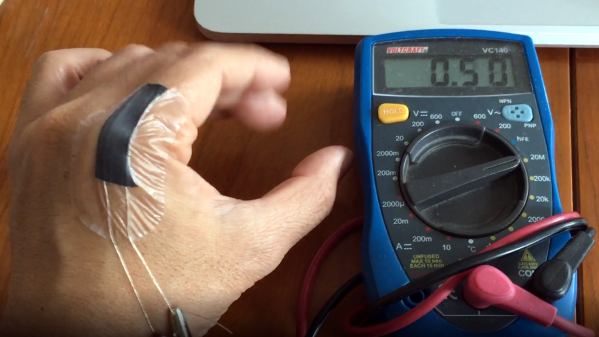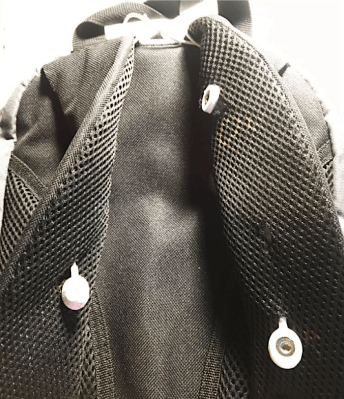[Mikst] has been working on wearable electronics and sensors for a long time, and shared the results of a different kind of bend sensor that fits directly onto the skin. It’s true that this kind of sensor design isn’t re-usable, but it is also very simple and inexpensive. It’s just a proof of concept right now, but we could see it or some of the other ideas [Mikst] tries, used in niche wearable applications where space is critical, like cosplay.
 At its heart the sensor is made from two strands of conductive thread and a small strip of stretchy, conductive fabric common in wearable e-textiles. It is stuck directly to the skin using a transparent, non-woven medical adhesive dressing that is particularly good at conforming to contoured areas of the body. In this case, it is used to stick the stretchy piece of conductive fabric directly onto [Mikst]’s knuckle, where it responds to even small movements. You can watch a multimeter measuring the resistance changes in the video, embedded below.
At its heart the sensor is made from two strands of conductive thread and a small strip of stretchy, conductive fabric common in wearable e-textiles. It is stuck directly to the skin using a transparent, non-woven medical adhesive dressing that is particularly good at conforming to contoured areas of the body. In this case, it is used to stick the stretchy piece of conductive fabric directly onto [Mikst]’s knuckle, where it responds to even small movements. You can watch a multimeter measuring the resistance changes in the video, embedded below.
We’ve seen [Mikst]’s work before in finding unusual solutions to e-textile problems, such as a three-conductor pivoting connection used to mount a wearable hall effect sensor.
Continue reading “Skin-Mounted Wearable Bend Sensor Gets Close And Personal”
















